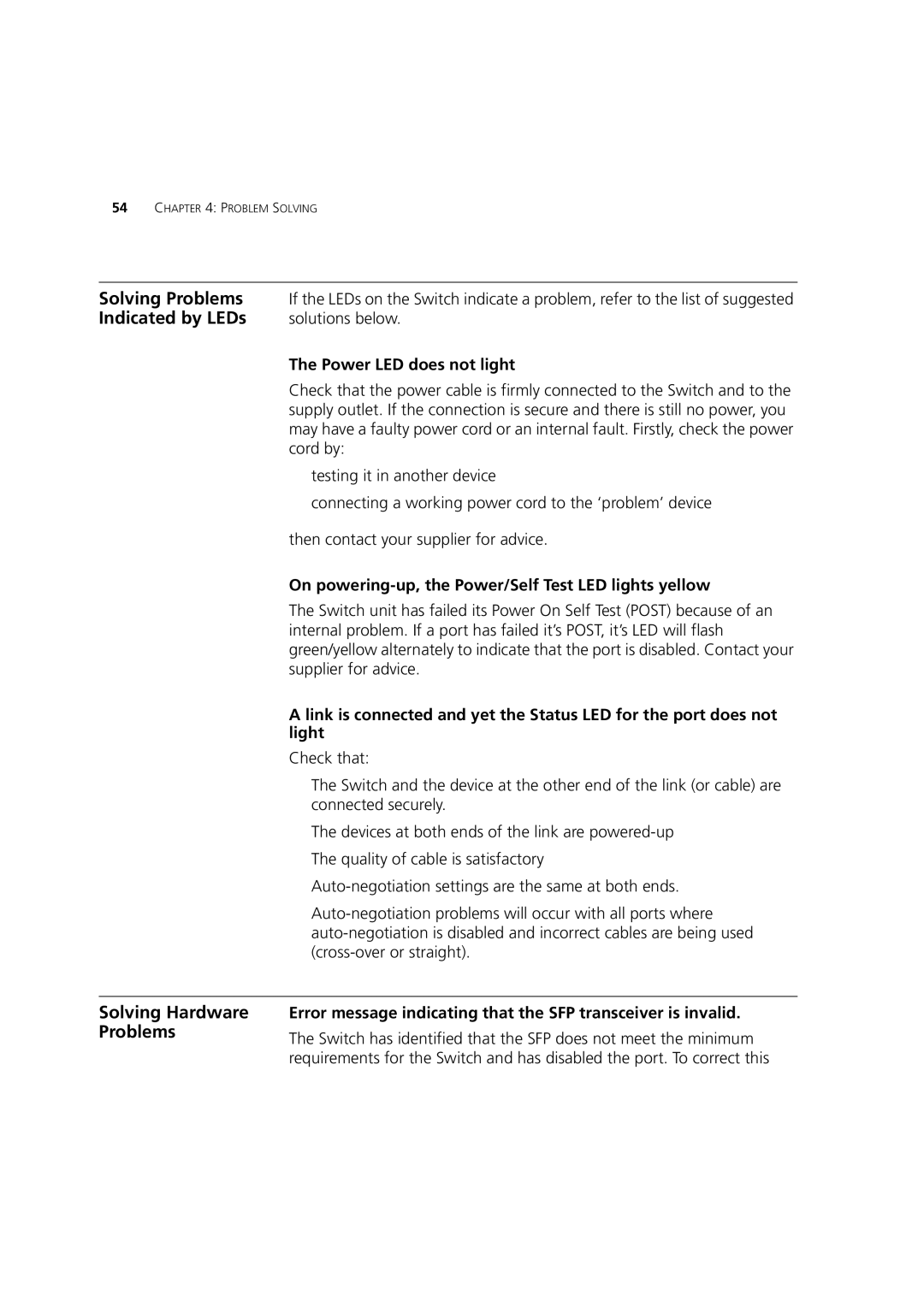
54CHAPTER 4: PROBLEM SOLVING
Solving Problems | If the LEDs on the Switch indicate a problem, refer to the list of suggested |
Indicated by LEDs | solutions below. |
The Power LED does not light
Check that the power cable is firmly connected to the Switch and to the supply outlet. If the connection is secure and there is still no power, you may have a faulty power cord or an internal fault. Firstly, check the power cord by:
■testing it in another device
■connecting a working power cord to the ‘problem’ device
then contact your supplier for advice.
On powering-up, the Power/Self Test LED lights yellow
The Switch unit has failed its Power On Self Test (POST) because of an internal problem. If a port has failed it’s POST, it’s LED will flash green/yellow alternately to indicate that the port is disabled. Contact your supplier for advice.
A link is connected and yet the Status LED for the port does not light
Check that:
■The Switch and the device at the other end of the link (or cable) are connected securely.
■The devices at both ends of the link are
■The quality of cable is satisfactory
■
Solving Hardware Error message indicating that the SFP transceiver is invalid.
ProblemsThe Switch has identified that the SFP does not meet the minimum requirements for the Switch and has disabled the port. To correct this
